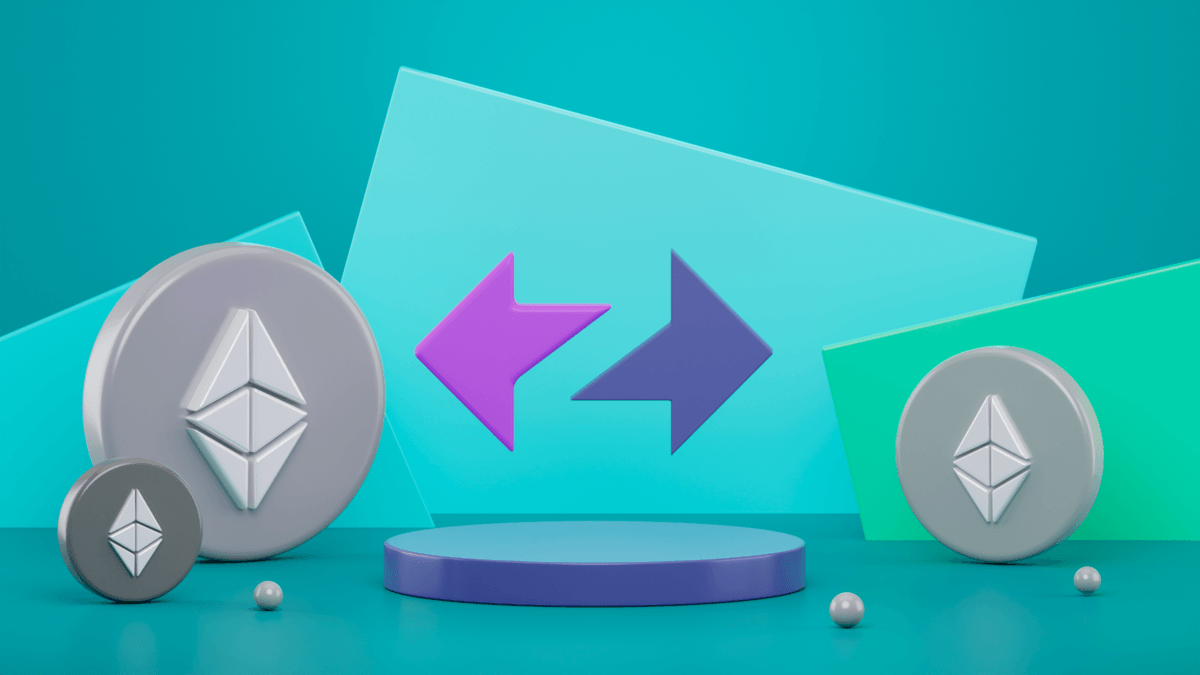Table of Contents
ToggleIn the world of blockchain technology, innovation never ceases. One of the most groundbreaking developments that has taken the crypto space by storm is the advent of Layer 2 network blockchains. These technological marvels are poised to revolutionize the way we interact with blockchain networks, offering faster speeds, lower costs, and an environmentally friendly approach.
What is a Layer 2 network?
Layer 2 refers to a secondary framework or protocol layer that operates on top of the primary blockchain layer, such as Ethereum. This layer is designed to address some of the inherent limitations of the base layer, like slower transaction speeds and higher fees. Layer 2 network solutions act as a bridge, enhancing the efficiency and scalability of blockchain networks. They offer a multitude of advantages, making them a hot topic in the blockchain community.
CoinDCX places Polygon as one of the leading Layer 2 solutions, which operates alongside Ethereum, enhancing its capabilities. It employs diverse technologies, including Proof of Stake (PoS) architecture, ZK-rollups, Optimistic roll-ups, and Plasma chains to boost efficiency. Other popular Ethereum Layer 2 Networks would be Arbitrum, Optimism, Base, Cronos or Avalanche.
The Need for Layer 2 Solutions
As network congestion on Ethereum intesified and gas fees increased, it became obvious that there’s a space for Layer 2 Networks in the Web3 world.
Layer 2 network blockchains offer several advantages that address critical challenges in the blockchain space as mentioned in an article by Cronj.
They significantly enhance scalability, allowing for a massive increase in transaction throughput. By processing transactions off the main chain and settling them periodically on the main chain, Layer 2 solutions alleviate network congestion and high gas fees.
Moreover, Layer 2 blockchains are cost-efficient, as they reduce the overall expenses associated with on-chain operations. Additionally, these solutions enhance privacy and security, making them appealing for various use cases, from DeFi platforms to gaming and non-fungible token (NFT) marketplaces.
Layer 2 Networks Re-Shaping Web3
Layer 2 networks are not only trying their hardest to achieve the highest TPS possible in 2023. They are actively trying to innovate blockchain technology, with each new layer 2 in 2023 bringing something new to the table. From zk-Rollups, to chains built by Centralized Exchanges, or social and environmental based chains, there is alsways something new around the corner in Web3.
Base Chain
When thinking of best Layer 2 Networks of the year, the most promising contender is almost undoubtedly Base Chain.
Base is a Layer 2 Ethereum chain built in collaboration with Optimism. Base has a lot of the same features other layer 2 networks have, such as improved transaction speed, reduced gas fees and higher transactions per second, but its main appeal is mopst definitely the fact that Base is a product from Coinbase, the #2 biggest Centralized Exchange. Coinbase is also the only CEX to be listed on Nasdaq, marking a huge landmark for cryptocurrency.
What this means for Base Chain is that there is a huge potential for the chain to bring a lot of new users from traditional finance to Web3.
zkSync ERA
zkSync is a Layer 2 zero knowledge network that was developed by Matter Labs.
The Layer 2 operates as a trustless system that leverages cryptographic validity proofs to offer Ethereum users scalable and cost-effective transactions. This protocol conducts computations off-chain and stores the majority of data off-chain as well. Users of zkSync can enjoy reduced transaction fees for tokens beyond ETH, all while maintaining the robust security and decentralization inherent to the Ethereum network.
Impressively, zkSync has garnered substantial backing, securing a total of $458 million in investments from prominent investors including Blockchain Capital and Dragonfly Capital.
HAQQ Network
HAQQ is a one of its kind layer 2 network that is based on offering a home for Muslim investors interested in Web3. This is done through carefully crafted business models that are Sharia-Compliant.
HAQQ is an EVM-equivalend chain based on the Cosmos SDK, and it allows for developers to deploy any Ethereum contract with no major modifications needed.
The most important part is obviously the ethical one here, and it will definitely be interesting to see how HAQQ can stay Sharia-Compliant in their practices, since it’s a very delicate and detailed topic that has a lot of contrasting opinions, particularly as far as cryptocurrencies go.
The Future of Blockchain
As Layer 2 network technology continues to evolve and gain traction, it’s poised to play a pivotal role in the mass adoption of blockchain technology. Whether you’re a crypto enthusiast, an investor, or simply curious about the future of finance and technology, Layer 2 blockchains are a fascinating space to watch. They are opening doors to a more accessible, efficient, and sustainable blockchain future that holds promise for all.
Top 5 No-Code Web3 Development Tools
In a rapidly evolving blockchain landscape, the emergence of Layer 2 technology has sparked new possibilities.
These advancements, offering lightning-fast transaction speeds and cost-effectiveness, are revolutionizing how we engage with blockchain networks.
As innovators and aspiring Web3 enthusiasts look to navigate this dynamic space, DeFi Builder stands as a beacon of support. With our no-code dApp builder, we empower individuals to bring their ideas to life swiftly and affordably. By harnessing Layer 2 solutions like Polygon, DeFi Builder enables users to create projects seamlessly, bypassing the complexities of traditional coding.
As the blockchain landscape unfolds, DeFi Builder is here to make the journey accessible, efficient, and filled with endless possibilities.
Join us in shaping the future of Web3.




